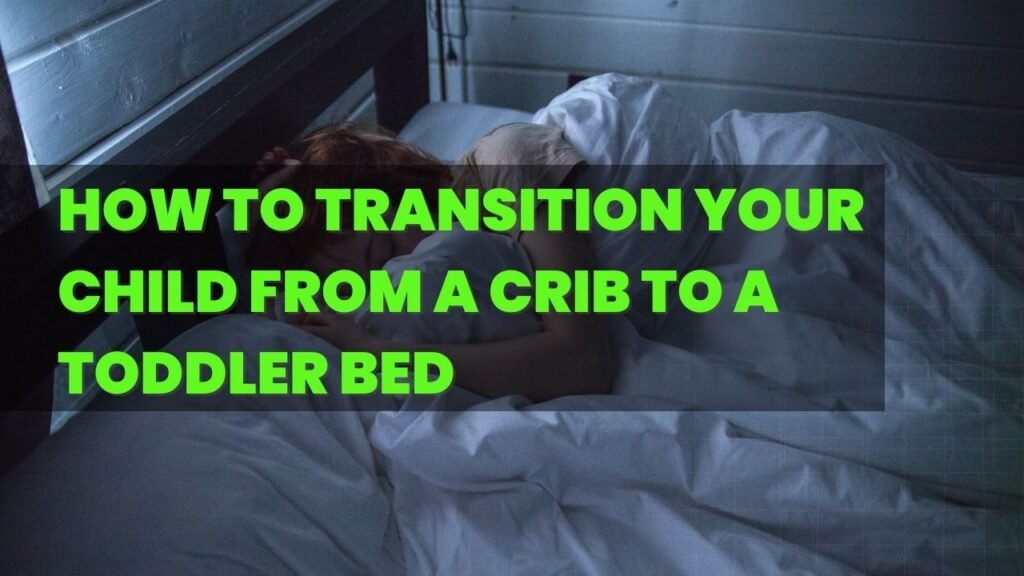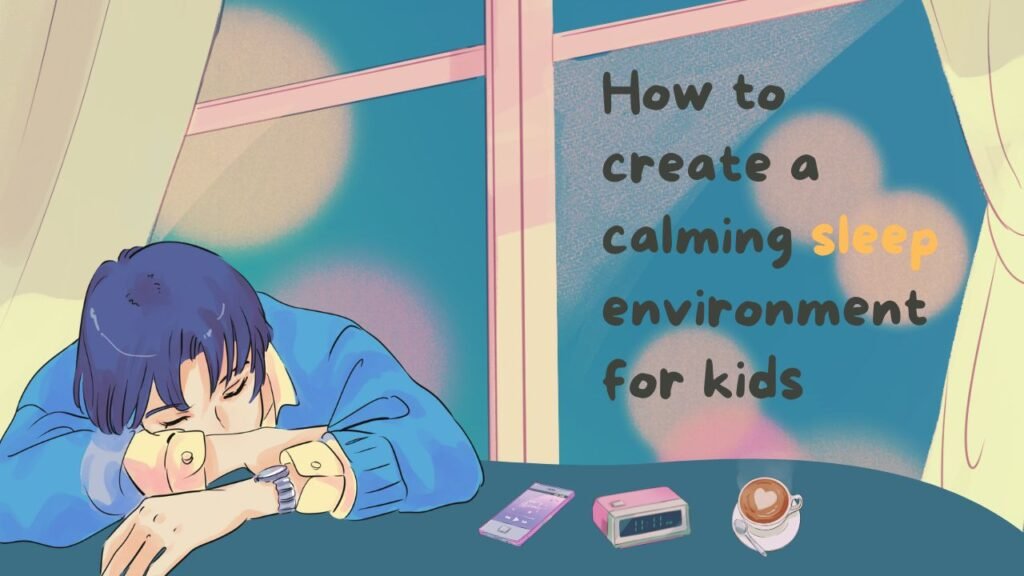Table of Contents
How to Transition Your Child from a Crib to a Toddler Bed: Sleep is an essential part of a child’s overall health and development, but this sleep can become interrupted by nightmares or night terrors.
These episodes can be frustrating for parents and troubling for children. Nightmares and night terrors: What causes them and how to alleviate nightmares and night terrors: What Causes Them and How to Help Your Child Through These Hurdles.
This guide will help clarify the differences and what parents can do to ensure their child has a good sleep environment.
What Are Nightmares?
Nightmares Rare, haunts in vivid detail happen in REM (Rapid Eye Movement) sleep. They are a typical part of childhood but can become an issue if common or intense.
Nightmares are often connected with a child’s imagination, which is particularly stirring during the early stages of cognitive development. Stress, scary stories or even an upsetting movie can set off these dreams.
Nightmare-afflicted children can wake up crying or frightened, and they usually want to be consoled by a parent.
Dreams can feel so real that it can be difficult for them to tell what is real and what is not. These episodes can interrupt their sleeping, resulting in fatigue, irritability and trouble concentrating during the day.
Nightmares are common around the ages of three to six, when cognitive development is on the rise and fear is developing.
What Are Night Terrors?

Night terrors, in contrast, are a different beast altogether and happen during non-REM sleep. Children having a night terror typically do not wake up completely, or recall the episode, unlike nightmares.
These episodes usually start with a sudden scream or cry and then are followed by significant physical activity like thrashing, sweating or rapid breathing. Night terrors usually happen within a couple of hours after falling asleep and can last from minutes to half an hour.
Night terrors happen most frequently in children ages three to eight and are believed to be caused by an over-excitable central nervous system.
They can be brought on by things like sleep deprivation, stress, fever, or just a change in routine.
Night terrors are generally harmless and often outgrown, but they can be terrifying for parents who see their child in distress.
Nightmares vs. Night Terrors: What Is the Difference?
How to Transition Your Child from a Crib to a Toddler Bed: Nightmares, night terrors: What’s the difference? The key to dealing with nightmares and night terrors is knowing how to tell them apart. Nightmares happen in the lighter stages of REM sleep, and we usually remember a nightmare well when waking up.
Children may remember aspects of the dream, and can often be soothed fairly easily. Night terrors, by contrast, take place during deep non-REM sleep, and the child usually has no memory of the episode. In addition, it is poor responsive to comforting since, during the episode, they are in a semi-conscious state.
Nightmares are a more common and less serious concern in general, but if someone in your life has frequent night terrors, then that might point to a problem. Knowing these differences can help parents respond appropriately and, if needed, seek professional advice.
How to Help Your Child Process Nightmares

When your child awakens upset from a nightmare, the best thing you can do is to reassure them. Hug them, talk to them in a steady and comforting tone, tell them they are safe.
Establishing an evening routine can help to prevent nightmares. This might involve a warm bath, reading a positive story or listening to soothing music.
A favorite stuffed animal, or a favorite blanket, a comfort object, can also bring a sense of safety.
If your child is older, ask them to share about their dream. That also helps take the fear out of the nightmare and allows them to deal with the feelings associated with the nightmare (realities of fear).
Steer clear of scary content for your child right before bedtime, as it can get their mind racing and lead to bad dreams.
In addition, a stable sleeping schedule guarantees your child enough sleep, which lowers the chances of side effects in the form of nightmares.
And if nightmares are chronic and interfering with their quality of life, consider reaching out to a pediatrician or child psychologist to discuss possible underlying issues, such as anxiety or trauma.
How to Effectively Manage Night Terrors
How to Transition Your Child from a Crib to a Toddler Bed: Night terrors are a bit of a different animal though. As the child is not fully aroused during an episode, don’t try to wake him or her; this will make them more confused and prolonged the episode.
Instead, prioritize their safety. Remove any objects in their immediate vicinity that they could potentially injure themselves on, and if necessary physically help guide them back to a resting position.
It is vital for the baby to have a safe and comforting sleep environment. To prepare, keep the room dark, and quiet and remove anything that could distract you. Establishing a soothing bedtime routine may also help; relaxation techniques may lower the risk of night terrors. Gentle yoga, deep breathing or guided imagery are among practices that can especially be helpful.
If your child has night terrors routinely, maintain a sleep diary to help find possible triggers.
This record can help identify patterns, like stress, disrupted sleep schedule or routine that could contribute to the episodes. In certain instances, a sleep study may be recommended by a health care provider to eliminate medical conditions as a cause of the sleep problem.
When to Seek Professional Help
Although more infrequent nightmares and night terrors are considered normal, there are cases in which professional help is necessary.
If your child has episodes more than a few times a week, seemed unusually tired in the daytime, or is showing anxiety or behavioral changes, then you should talk to a pediatrician or sleep specialist.
These experts can assist with sleep-related concerns and can go over solutions for improved sleep.
In a very small number of instances, recurrent night terrors may be a sign of a more serious sleep disorder.
Disorders like obstructive sleep apnea or restless leg syndrome can get in the way of deep sleep and trigger episodes of night terrors. Reaching out for medical advice early could prevent potential complications and enhance your child’s overall well-being.
Tips for Avoiding Nightmares and Night Terrors

How to Transition Your Child from a Crib to a Toddler Bed: As per the popular saying, prevention is better than cure, and there are a few measures that can be taken by parents to help reduce the chances that children will experience nightmares and night terrors.
Having a consistent sleep schedule is important because irregular schedules can upset the body’s natural sleep cycle.
Avoiding activities that energize for sleep including maintain a regular sleep schedule Encourage Your child to get up & sleep at the same time every day, even on the weekend
Diet is another factor in sleep quality. Don’t get some heavy or sugary meals close to bedtime since they can disturb your kid to help them fall asleep.
Do the same with screen time in the evening. The blue light emitted from devices like tablets and phones can inhibit melatonin production and hinder children from settling down.
Another critical component is managing stress. Guide your child to relaxing methods like mindfulness or meditation that they can use before going to sleep. Strengthening your connection, and providing emotional security for both partners on a daily basis also helps minimize undesirable dreams.
Conclusion: How to Transition Your Child from a Crib to a Toddler Bed
Awareness of nightmares and night terrors is the first step in assisting your child traverse these difficulties.
Although they can be alarming, they are typically a benign phase of childhood development and tend to go away on their own with time.
Parents can support their little ones to fall asleep peacefully by establishing a calming bedtime routine, encouraging a regular sleep-wake schedule and taking care of potential triggers.
If there are repeated episodes or those episodes interfere significantly with your child’s quality of life, don’t hesitate to reach out for professional guidance.
If you following the right methods, a well-rested child is a happy and healthy child, and their dreams can be as sweet as they deserve to be.





